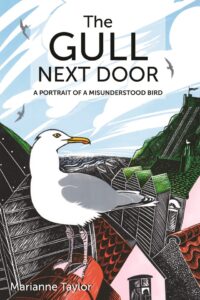 When I was growing up in a fishing town on the Oregon coast, gulls were seemingly everywhere at all times. From the waterfront to the rooftops of buildings throughout the town to the car park of the nearby national park, examples of a range sizes, shapes, and seemingly inexplicable white, grey, and brown color patterns could be seen at different times throughout the year. Quarrelsome, sometimes confrontational, and nearly always raucus, I – and most everyone I knew – at best ignored them whenever we could and insulted them when we couldn’t.
When I was growing up in a fishing town on the Oregon coast, gulls were seemingly everywhere at all times. From the waterfront to the rooftops of buildings throughout the town to the car park of the nearby national park, examples of a range sizes, shapes, and seemingly inexplicable white, grey, and brown color patterns could be seen at different times throughout the year. Quarrelsome, sometimes confrontational, and nearly always raucus, I – and most everyone I knew – at best ignored them whenever we could and insulted them when we couldn’t.
It wasn’t until decades later that I came to see these much maligned birds in a different light, and regretted all the time I hadn’t spent watching them, learning their habits and to decode their remarkable life stage plumages, and most of all saying all the pejorative things about them that I – out of ignorance and learned prejudice – had.
Marianne Taylor, on the other hand, appears to have been a lariphile since her own childhood on the English coast. In fact, she is now described as an advocate for them, a description well supported by her new book The Gull Next Door: A Portrait of a Misunderstood Bird, recently published under the Wild Nature Press imprint of Princeton University Press. Through her reflections upon the gulls she has spent time observing, explanations of the life history, ecological roles, and conservation status of a variety of gull species, and excursions into gulls as portrayed in folklore and the arts, Ms. Taylor aspires to awaken more people to a new understanding of them and to promote the idea of how we “might live more harmoniously with these majestic yet misunderstood birds.”
Available from:
If you enjoyed reading this, please consider signing up for The Well-read Naturalist's newsletter. You'll receive a helpful list of recently published reviews, short essays, and notes about books in your e-mail inbox once each fortnight.

